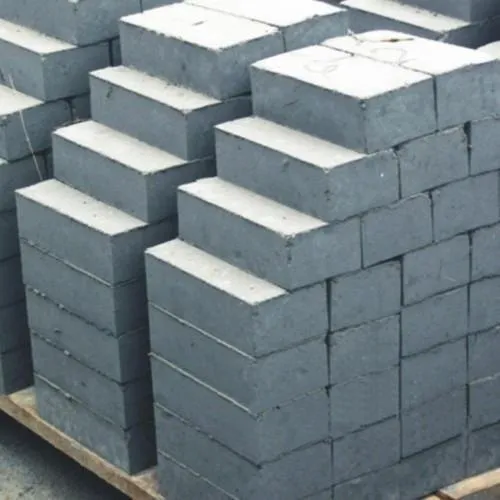Introduction
AAC and Fly Ash blocks are both widely used in the construction industry for building walls, partitions, and other structures. However, there are some differences between the two.
AAC block
AAC blocks are made from a mixture of cement, lime, fly ash, water, and an aerating agent that causes the mixture to rise and become a lightweight, cellular material. The blocks are then cut into various sizes and shapes and cured in an autoclave at high pressure and temperature. The resulting blocks are very lightweight, strong, and durable, with excellent thermal insulation properties. AAC blocks are also resistant to fire, pests, and rot, and are easy to work with.
Fly Ash Block
Fly Ash blocks, on the other hand, are made primarily from fly ash, a byproduct of burning coal in power plants, and a small amount of cement and water. The mixture is then poured into moulds and allowed to cure for several days. Fly Ash blocks are lighter than conventional concrete blocks, have better insulation properties, and are more environmentally friendly as they use waste materials that would otherwise go to landfills. They also have good fire resistance and are easy to work with.

Comparison Between AAC and Fly Ash Blocks
The comparison between AAC and Fly Ash blocks has a similar appearance at quick glance, however, they differ in various ways under closer inspection. The comparison is made as follows:
| Sl.No. | Point of Comparision | AAC block | Fly Ash Brick |
|---|---|---|---|
| 1. | Raw Materials | AAC blocks are made from a mixture of fly ash, lime, cement, gypsum, and aeration agent. | Fly ash bricks are made from a mixture of fly ash, cement, sand, lime, and gypsum. |
| 2. | Compressive Strength | Typically, the compressive strength of AAC blocks can range from 3 to 7 N/mm² for non-load-bearing applications and from 5 to 10 N/mm² for load-bearing applications. | Typically, the compressive strength of fly ash blocks can range from 3.5 to 10 N/mm2. |
| 3. | Sizes | The standard size of AAC blocks is 600 mm x 200 mm x 75 mm, but other sizes such as 600 mm x 200 mm x 100 mm and 600 mm x 200 mm x 150 mm are also available. | The standard size of fly ash blocks is 400 mm x 200 mm x 200 mm, but other sizes such as 400 mm x 200 mm x 100 mm and 400 mm x 200 mm x 150 mm are also available. |
| 4. | Shape | AAC blocks can also come in different shapes and sizes for specific applications, such as corner blocks, lintel blocks, and U-shaped blocks. | Fly ash blocks can also come in different shapes and sizes for specific applications, such as corner blocks, lintel blocks, and hollow blocks. |
| 5. | Water Absorption | The water absorption of AAC blocks can range from 5% to 10% by its weight, depending on the density and quality of materials used. | The water absorption of fly ash blocks can range from 10% to 20% by its weight. |
| 6. | Thermal Conductivity | The thermal conductivity of the AAC block is 0.21 – 0.42 W/m K. | The thermal conductivity of fly ash bricks is 0.3 – 0.4 W/m K. |
| 7. | Sound Insulation | 40 – 45 dB sound is reduced by a 200 mm thick AAC block. | 37 – 39 dB sound is reduced by 100 mm thick brick. |
| 8. | Termite Resistance | ACC blocks are inorganic insect-resistant. | Fly ash bricks are insect resistant as they are made from inorganic materials. |
| 9. | Uses | AAC Blocks can be used to build internal and external walls of a framed structure. AAC blocks are also used in load-bearing structures. | Fly ash bricks are strong and durable bricks which are used as an alternative to clay bricks. They can be used in masonry construction as well as for other uses in which red bricks are used. |
| 10. | Cost | The individual block is expensive, but the overall cost of masonry is low, as it consumes less mortar. | Fly ash bricks are the cheapest masonry units. The overall cost is more as they require more mortar |
Conclusion
Both AAC and Fly Ash blocks have their advantages, depending on the specific requirements of the project. AAC blocks are stronger, more durable, and provide better insulation properties than Fly Ash blocks. However, Fly Ash blocks are more environmentally friendly and offer good insulation properties as well. Ultimately, the choice between the two will depend on factors such as cost, availability, and specific project requirements.
FAQs
Q: What are the advantages of using fly ash blocks?
A: Some advantages of using fly ash blocks include their strength, durability, and resistance to fire and pests. They also have good thermal insulation properties and are environmentally friendly as they use a waste material (fly ash) that would otherwise end up in landfills.
Q: How are fly ash blocks made?
A: Fly ash blocks are made by mixing fly ash, cement, water, and other additives, such as sand or lime, to create a paste. The paste is then poured into moulds and cured under a specific temperature and humidity.
Q: What are the available sizes of AAC blocks?
A: The size of AAC blocks can vary depending on the manufacturer and intended use. The size of AAC blocks can vary depending on the manufacturer and intended use. The standard size of AAC blocks is 600 mm x 200 mm x 75 mm, but other sizes such as 600 mm x 200 mm x 100 mm and 600 mm x 200 mm x 150 mm are also available.
Q: What are the available sizes of fly ash blocks?
A: The size of fly ash blocks can vary depending on the manufacturer and intended use. The standard size of fly ash blocks is 400 mm x 200 mm x 200 mm, but other sizes such as 400 mm x 200 mm x 100 mm and 400 mm x 200 mm x 150 mm are also available.
Also read:
- AAC Block (Autoclaved Aerated Concrete block)
- Types of Bricks Used in Building Construction | 6 Types of Bricks
- What is Adobe Wall?
![]()







